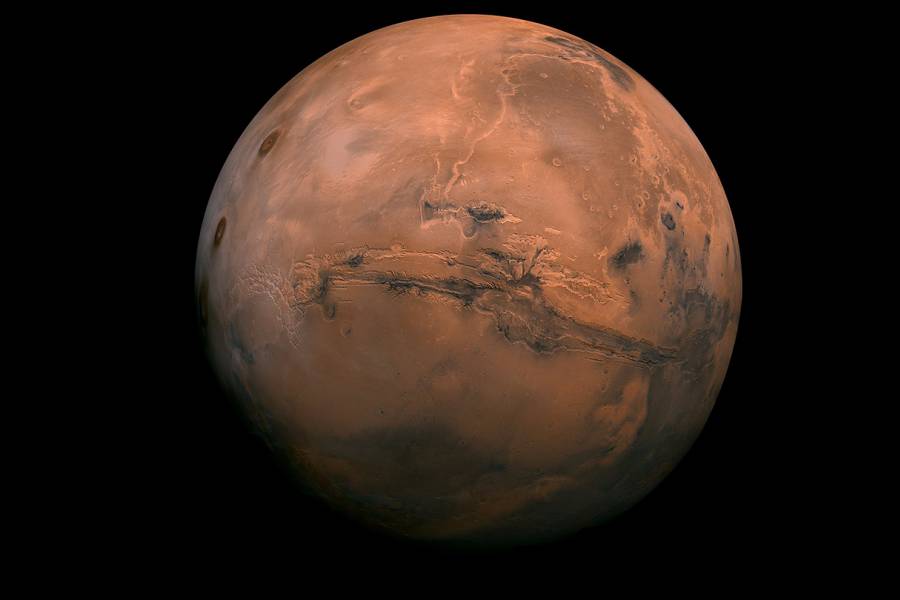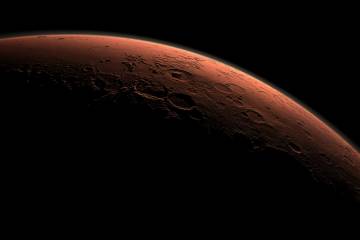For years, engineers and planetary scientists studying Mars have had a dust problem. Much of the planet is covered by fine silt—grains of rock smaller than sand, smaller even than dust on Earth and more plentiful—that can foul instruments on spacecrafts such as the Mars robotic rovers. Dust gets on camera lenses. Dust messes up instruments like emission spectrometers. In the most dramatic example to date, a massive storm, in NASA parlance a PEDE, or planet-encircling dust event, so obscured the sun and coated solar panels that the Opportunity rover could not generate enough power to keep roving. So Opportunity, which had been rolling around Mars for 14 years, powered down and has not been heard from since June 10. Attempts to rouse it so far have failed.
Planetary scientists also have had a Martian dust explanation problem. On Earth, dust forms from the abrasion of comparatively soft rock by wind, water, glaciers, even volcanic eruptions and meteorite impacts. But for most of its 4 billion years, Mars has lacked all of those mechanisms except the wind. So what could be the source of so much troublesome Martian dust?
Kevin Lewis, an assistant professor in the Department of Earth and Planetary Sciences in the Krieger School, and postdoctoral fellow Lujendra Ojha believe they have an answer: wind erosion from a single Martian geological feature known as the Medusae Fossae Formation. The MFF is a set of mounds, roughly 3 kilometers high, that extends nearly 600 miles along the Martian equator and once covered an area half the size of the continental United States; it has now eroded to about 20 percent of the U.S. A few months ago, Lewis and Ojha published a paper in Journal of Geophysical Research: Planets that proposed the MFF had been created by explosive volcanic eruptions, which would make it the largest known volcanic deposit in the solar system, by two orders of magnitude. Similar terrestrial deposits contain significant amounts of sulfur and chlorine, and the scientists found this was true of the Medusae formation as well.
Lewis, Ojha, and scientists from Louisiana State University and Brock University in Canada also studied data from the various Mars rovers that had sampled dust from opposite sides of the planet, and found that no matter where it was collected, the dust contained a similar abundance of sulfur and chlorine; what's more, the two elements were in nearly the same ratio in every sample. This signature composition suggested a common source.
The researchers analyzed data from the Mars Odyssey spacecraft, which has been orbiting the planet since 2001, and found that the MFF, the subject of their previous paper, not only contains the highest enrichment of sulfur and chlorine on Mars but does so in a ratio that matches the dust sampled from the various Martian sites. Furthermore, the composition matched the Medusae Fossae Formation, not the local rock where the dust was sampled—clearly it had been transported to the sample site. "Everywhere we land, the dust seems to be the same composition," Lewis says. "The dust is a global unit, not composed of the local bedrock at a given site."
Could the MFF have produced enough by itself to be the primary source of dust all over the planet? The researchers calculated how much of the formation has been scoured away over the last 3 billion years. They concluded that enough fine, powdery rock has been eroded to cover all of Mars in a layer from 2 to 12 meters thick. That's a lot of powdered rock, enough to convince Lewis and his colleagues that the Medusae Fossae Formation is, indeed, the primary source of dust on Mars. In the precise language of the paper, which appeared in Nature Communications with Ojha as lead author, their findings "resolve a major unknown in the source-to-sink pathways of the Martian dust cycle."
"There's not an obvious alternative right now," Lewis says. "The assumption had been that the dust has been circulating around the planet but was derived from the erosion of Martian bedrock everywhere. But that isn't what the dust looks like. The Medusae Fossae Formation is the closest match."
Posted in Science+Technology
Tagged earth and planetary sciences, outer space, mars









